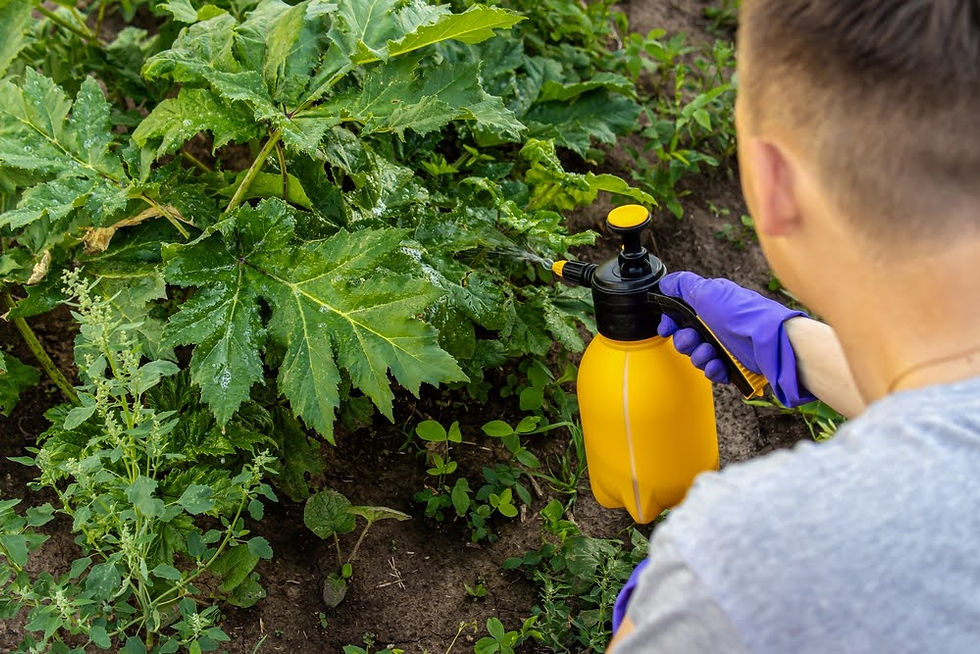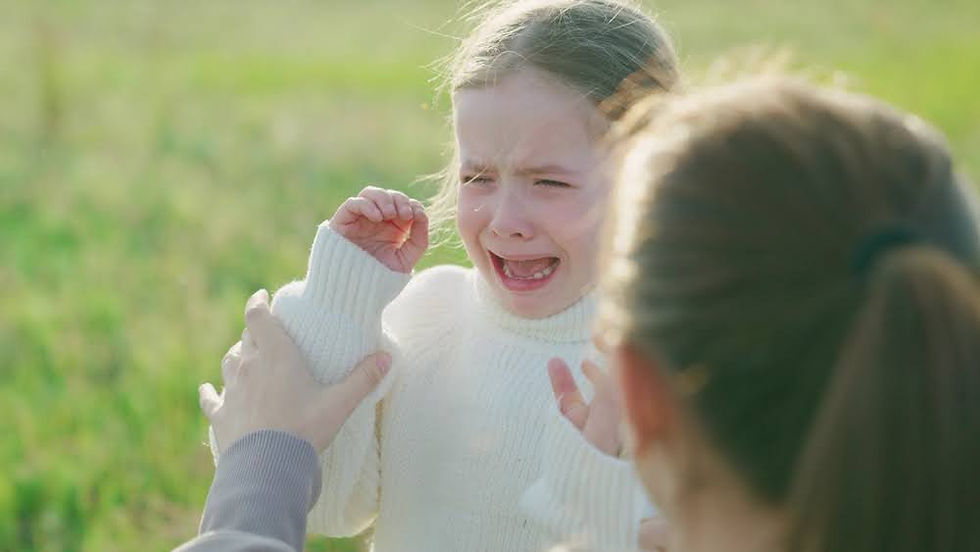How to Safely Use Herbicides Around Pets and Children
- Jenny Grennan
- Sep 3, 2024
- 4 min read

The safety of ones who depend on us is always a No. 1 priority. As pet owners or parents, we have to be extra careful about the products we use, especially herbicides.
These chemicals, while effective at eliminating unwanted weeds, can pose significant risks to our pets and children if not used correctly.
That’s why this article focuses on safe herbicide use around pets and children, ensuring our loved ones stay safe while our gardens remain weed-free.
Understanding Herbicides and Their Risks
Herbicides are chemicals specifically designed to target and eliminate weeds. While they help keep our gardens neat and healthy, they also come with certain risks, especially when used around pets and children.
Herbicides are generally classified into different types, such as selective and non-selective, or pre-emergent and post-emergent. Some herbicides, like the Roundup QuikPro Granular Herbicide, are designed to tackle specific weeds, while others may kill any plant they come into contact with.
The potential health risks from herbicides can vary depending on the type and concentration of the product. For pets, exposure can lead to symptoms ranging from skin irritation to more severe reactions like vomiting or difficulty breathing.
Similarly, children, with their habit of exploring and touching everything, are at risk if they come into contact with these chemicals, either through skin contact, ingestion, or inhalation. To avoid these risks, we need to be aware of the herbicides we choose and how we use them.
Choosing the Right Herbicide
Selecting the right herbicide is a crucial step in minimizing risks to our pets and children. Not all herbicides are created equal; some are safer than others. When browsing through herbicides you’re considering to buy, look for products labeled as pet-safe or non-toxic.
These labels usually indicate that the herbicide has a lower toxicity level and is less likely to cause harm if accidentally ingested or touched.
Organic herbicides and natural alternatives are also good options since they tend to have fewer harsh chemicals.
Reading product labels carefully is key. We should look for herbicides that are certified as safe for use around pets and children. Additionally, we need to be mindful of how these products work.
For instance, some herbicides are designed to be used in specific weather conditions or at particular times of the day to minimize risks. Choosing a herbicide with low volatility, like certain organic products, can help reduce the likelihood of harmful vapors affecting our pets or kids.
Proper Application Techniques
Once we’ve selected a safe herbicide, proper application is the next step in ensuring safety. Before applying, it’s essential to follow all instructions on the product label. This includes wearing protective gear, like gloves and masks, to avoid direct contact with the herbicide.

It’s also crucial to time the application when pets and children are not in the area. Ideally, we should apply herbicides early in the morning or late in the evening when the weather is calm, which reduces the risk of the herbicide drifting to unintended areas.
We should remove any items that children or pets might interact with, such as toys, pet bowls, or outdoor furniture, from the area before applying the herbicide.
After application, it’s best to keep pets and children away from the treated area for the period recommended on the product label, which can vary from a few hours to a few days depending on the herbicide used. This waiting period allows the herbicide to dry and settle, minimizing the risk of accidental exposure.
By choosing the right products and applying them correctly, we can achieve safe herbicide use around pets, ensuring our gardens remain healthy and our loved ones stay protected.
Safety Precautions Before, During, and After Application
Taking safety precautions before, during, and after applying herbicides is essential for protecting our pets and children. Before applying any herbicide, we need to prepare the area by removing any items that could come into contact with the chemicals.
This includes toys, pet bowls, and any outdoor furniture that might be in the application zone. Ensuring that our pets and children are indoors or kept away from the treated area is crucial to prevent accidental exposure.
During the application, it's important to stay vigilant. We should avoid spraying on windy days to minimize drift and ensure that the herbicide is only affecting the intended area.
Wearing protective clothing, such as gloves, long sleeves, and masks, can also help protect us from any potential contact with the chemicals.
After applying the herbicide, it’s essential to follow the product’s guidelines for how long to keep pets and children out of the treated area.
This could range from a few hours to several days, depending on the herbicide’s potency and drying time.
Properly storing any remaining herbicides in a safe, secure location, out of reach of children and pets, is also crucial to prevent accidental ingestion or contact.
Emergency Response to Herbicide Exposure
Despite our best efforts to ensure safe herbicide use around children and pets, accidents can still happen. If a pet or child comes into contact with herbicides, it’s important to act quickly.

The first step is to remove them from the exposure area immediately and rinse any affected skin or fur with plenty of water. If ingestion occurs, do not induce vomiting unless directed by a professional. Instead, contact a poison control center or a veterinarian for guidance.
It's also helpful to recognize the signs of herbicide poisoning, which can include symptoms like vomiting, drooling, difficulty breathing, or skin irritation. Knowing these signs can help us act promptly and seek medical attention when necessary.
Keeping emergency contact information, such as the number for a poison control center and a veterinarian, readily available is always a good practice.
Conclusion
In summary, keeping our gardens weed-free doesn’t have to come at the cost of our pets’ and children’s safety.
By choosing the right products, such as pet-safe or organic herbicides, and applying them properly, we can ensure safe herbicide use around children and pets.
Taking precautions before, during, and after application, exploring non-chemical alternatives, and being prepared for any emergencies are key steps in keeping our loved ones safe while enjoying a healthy, beautiful garden.
To buy the best herbicide on the market and not spend a whole fortune, call JBL Pest Solutions, LLC. We offer premium products with more than reasonable price tags!




Comments